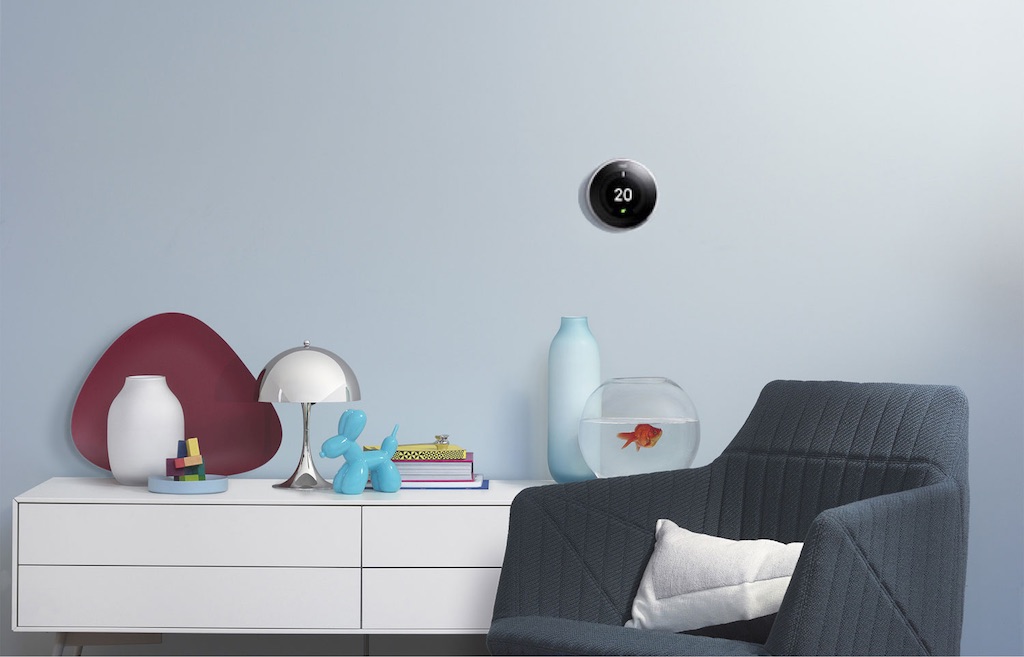
A smart thermostat is one of the best additions to a smart home. If you’ve been considering adding a smart thermostat to control your heat, here is everything you’ll need to know about the features and benefits of these great devices.
Table of contents
What are smart thermostats?
Smart thermostats are thermostats that allow you to control your home’s heating, cooling, or both. Depending on the type they can connect to forced air furnaces, hot water heat, or electric baseboard heaters, and they reduce your energy bills by giving you a greater level of control over the heating and cooling of your home. You’ll find models from brands like Google Nest, Honeywell, and Ecobee, among a variety of other smaller brands.
Smart thermostats are controlled via an app
Just like other smart home products a smart thermostat is controlled by a dedicated app that works with smartphones and/or tablets. You’ll simply download the free app that applies to your type of phone (typically iOS or Android) by visiting the Google Play Store or Apple’s App Store, create a unique login account, link your phone/device to your smart thermostat, and begin using your thermostat just as you would any other app-controlled device.
Adjust your temperature from anywhere in the world
When you have a smart thermostat you can adjust your home’s temperatures remotely from virtually anywhere in the world. All that’s needed is Wi-Fi access for your device so you can connect to your thermostat via the internet and you can begin making adjustments. In many cases, app control also gives you the ability to see things like your home’s real-time energy usage and power consumption history so you can evaluate your energy usage habits and make adjustments to its consumption as needed.
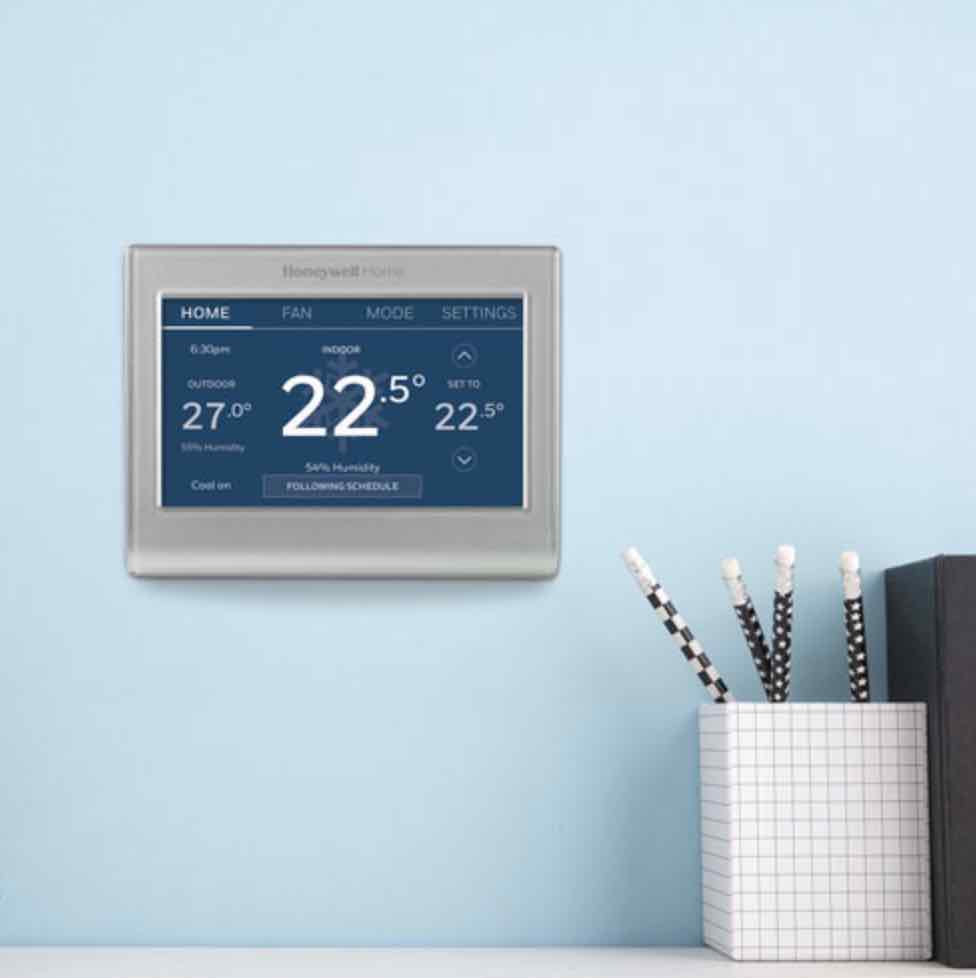
Smart thermostats are programmable
Smart thermostats are also programmable, and in many cases can even program themselves. This means that you can set your thermostat to do different things at different times of the day, such as lowering the temperature throughout your home at night when you’re sleeping cozy in bed, or having your heat come on before you get up in the morning so that you won’t have to be cold until your house warms up.
This type of thermostat provides users with a much more effective climate control system than a traditional thermostat. They give you better control of your furnace and provide a range of feedback data to help you better manage its energy output. It’s a simple device that helps you to be more comfortable with the temperatures in your home more often, and it can save you money on your power consumption bill each month.
Key features of smart thermostats
While not every feature will apply to every thermostat, most models share a few of the same features.
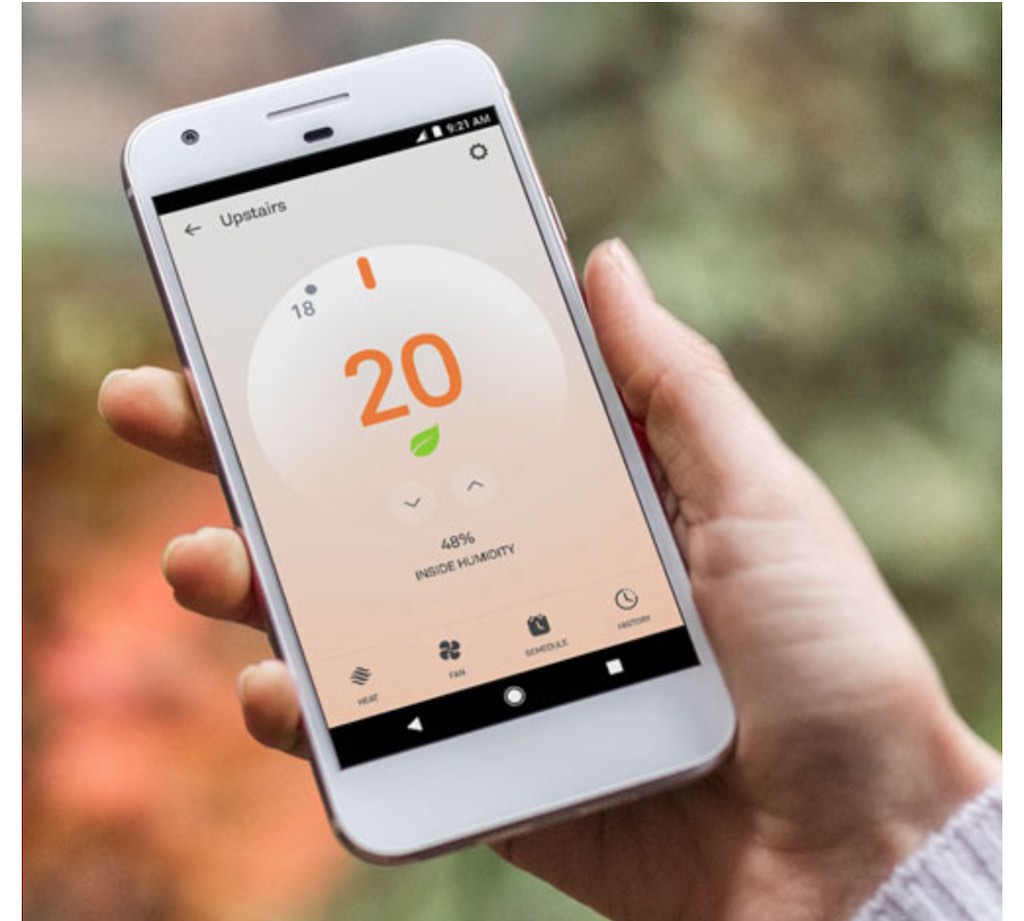 Smart thermostat apps
Smart thermostat apps
Any smart home app will allow you to turn its corresponding device on and off, make changes to its settings, and generally check in on the product from virtually anywhere you are in the world.
Just keep in mind that apps do vary, but many will allow you to set timers on your devices from within the app or view the history of the product’s usage via your smart phone.
If you find it important to have a certain type of app setting for your thermostat, you’ll want to research the app capability before you choose the model for you.
Smart thermostats reduce your energy costs
One of the best features of a smart thermostat is its ability to help you keep your energy costs down. That’s because they give you a variety of ways to better manage your heating and cooling usage including being able to log into your smartphone app to turn your thermostat down or off when you realize that you won’t be home at your usual time.
Wi-Fi connectivity offers easy heat control
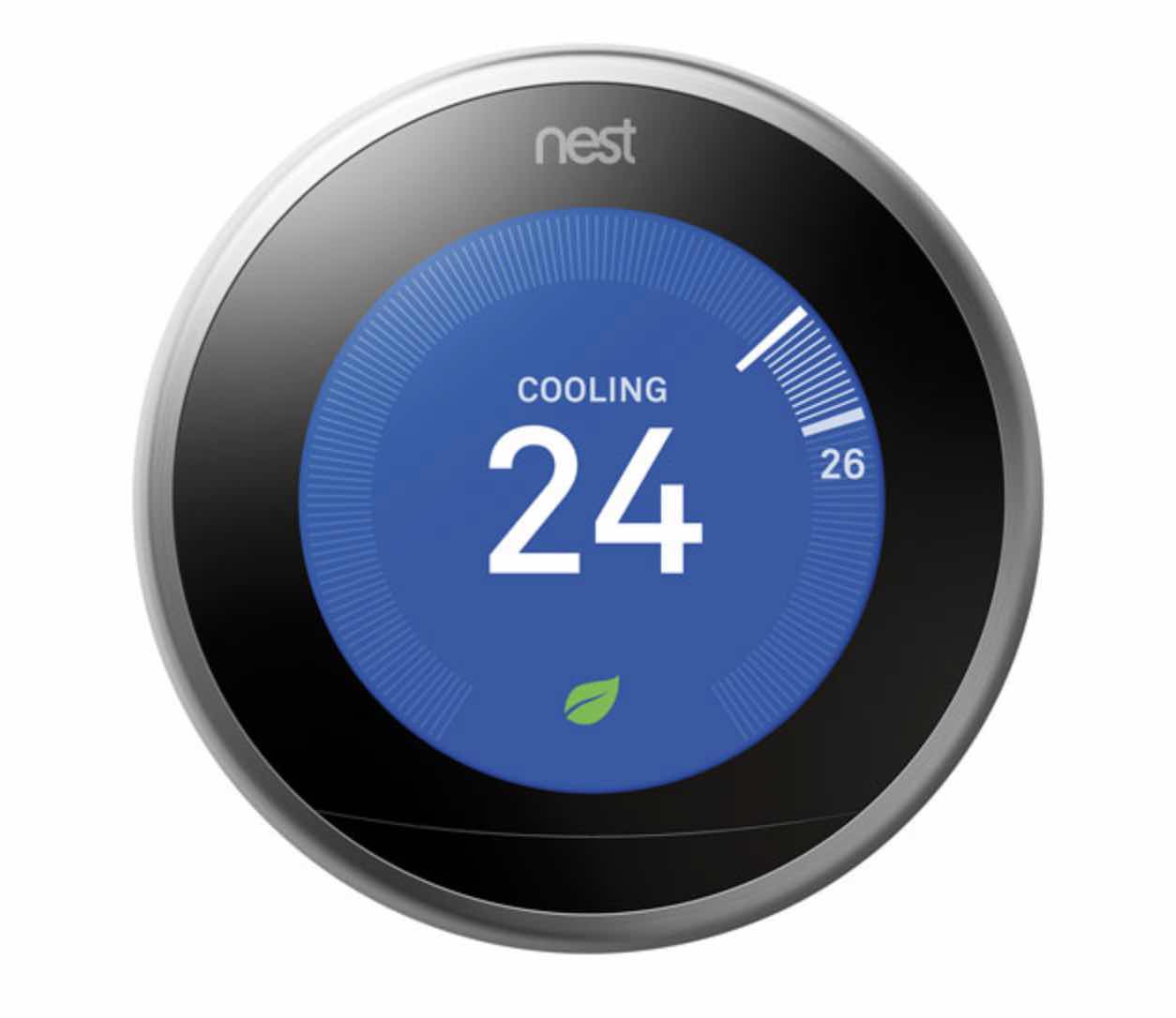
By connecting to your home’s existing Wi-Fi network, these thermostats can communicate with your other smart devices and use the internet to your home’s advantage. They can check the internet for the latest weather forecast and conditions in your area and adjust themselves accordingly to prepare for those conditions. If, for example, there’s a cold snap coming in before you’re going to get home from work, some models of smart thermostat can be set to automatically prepare for it.
Smart thermostats can learn your heat preferences
One type of thermostat, the Google Nest Wi-Fi Smart Learning Thermostat, uses Nest’s smart learning technology to ‘learn’ your regular schedule of arrival and departure as well as your heating and cooling preferences. Using the data it has collected, the Google Nest Learning Thermostat is able to program itself to turn on when you want it on and off when you want it off. Not only do you get completely hands-free heating and cooling that’s designed just for your home, but Google Nest claims it will reduce your overall energy consumption by as much as 20%.
Integration with other smart home devices
Smart thermostats can communicate with your other smart devices. Compatible smart home devices can communicate with and even control their other smart home counterparts. As an example, Google Nest Protect, a smart home smoke and carbon monoxide detector will send a message to your Google Nest thermostat if it detects a CO2 leak. The smart thermostat will work with the smoke detector and immediately turn off your furnace as that’s the likely source of the leak.
Do smart thermostats work with any furnace?
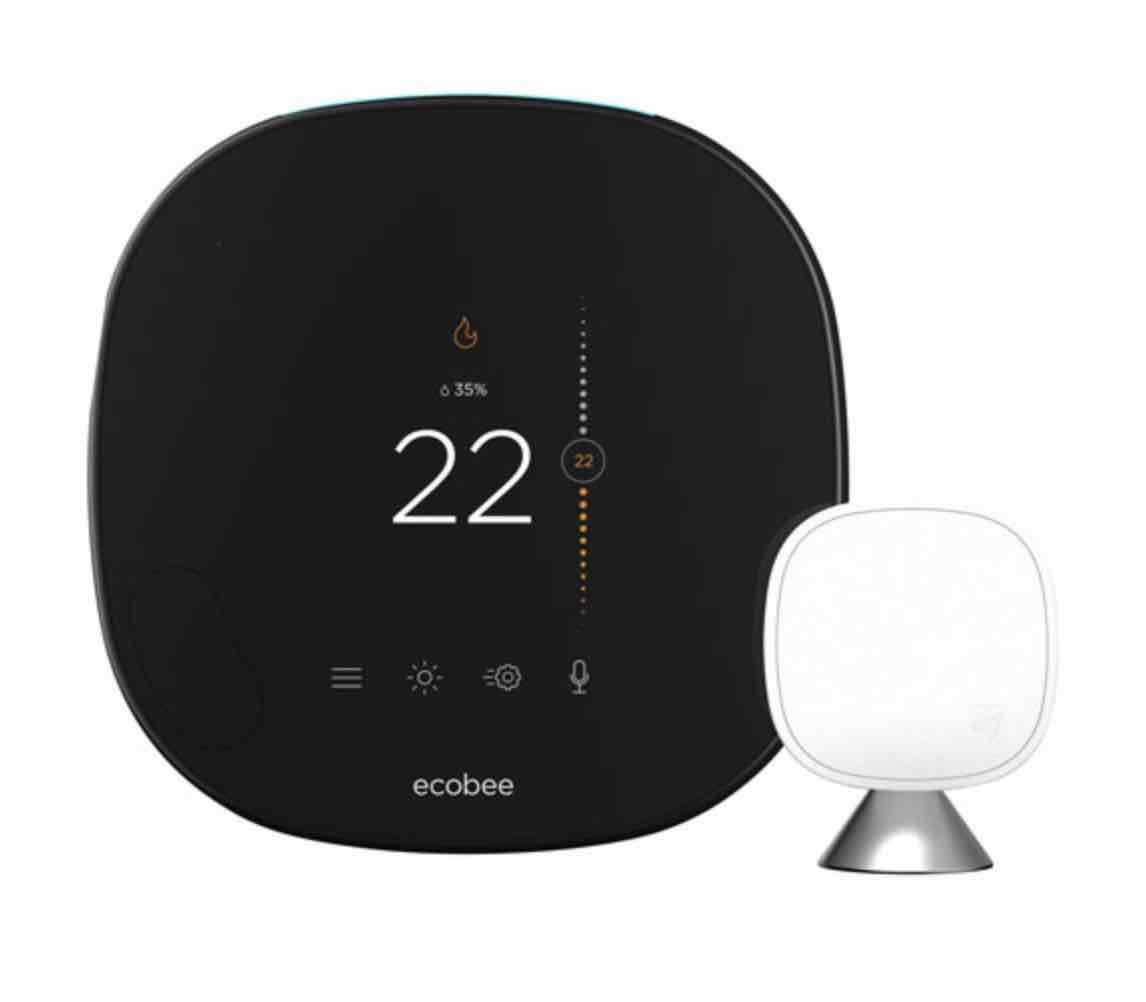
Smart thermostats will work with many different types of heating. To ensure the model you choose will work with your home’s heat or cooling source, you’ll want to take a look at the ‘works with’ information in the product description.
Here is a quick list of a few smart thermostats, their main features, and the types of heat they work with.
Forced air, heat pump, and HVAC heat
Forced air, heat pumps, and HVAC systems are heating systems that work via one thermostat. There are several types of smart thermostat that will work with these type of heating systems.
Google Nest Smart Learning Thermostat
The Google Nest Wi-Fi smart learning thermostat is one of the most popular types of thermostat for forced air, heat pump, radiant, and central HVAC systems. Now in its 3rd generation, Google Nest Learning Thermostat can control your home’s heating and cooling. It has a large LCD display and it will light up when you’re near it so you can see the temperature when you walk by or are across the room.
Google Nest has learning technology to learn your home’s heating patterns. It will adjust your interior temperature based on the temperature outside or you can set it to turn to a certain temperature when you leave your home and when you come back.
Google Nest smart thermostat is one of the most efficient, easy to use smart thermostats. The only downside to this thermostat is that it will not work with electric baseboard heaters.
Nest Protect and Works with Nest
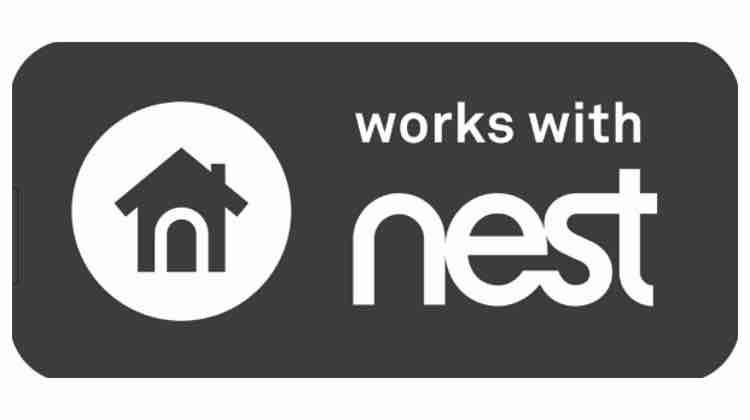
If you choose the Google Nest smart thermostat, you’ll want to take a look at Nest Protect and Works with Nest.
The name Nest Protect refers to Nest Protect Wi-Fi Smoke & Carbon Monoxide Alarm. These devices are potentially life-saving smoke detectors that come in both battery and wired forms. Just like other Nest smart home devices, the Nest Protect is app-controlled and can be managed from virtually anywhere. What’s most impressive about the Nest Protect system is the way that it works in tandem with your Nest smart thermostat to turn off potential dangers when it detects them.
The Google Nest Protect system can directly communicate with your Google Nest smart thermostat and tell it to turn the furnace off in the event of a CO2 leak. In the event of a fire, Google Nest Protect can also instruct your smart thermostat to shut down your furnace to reduce heat in your home at such a dangerous time.
Google Nest Protect is also part of a powerful Works with Nest initiative. Works with Nest is a smart home ecosystem that provides the communication link between two or more Nest smart home devices and gives them the power to work together to make your smart home even smarter.
Works with Nest is compatible with multiple brands
Works with Nest isn’t limited to products manufactured by Google Nest itself. Works with Nest is an evolving smart home ecosystem that can communicate with smart home devices from a variety of different manufacturers. There are literally hundreds of smart home devices from dozens of different manufacturers that are compatible with Works with Nest.
That includes smart locks, smart lights, smart plugs and switches, smart security cameras, smart doorbells, smart voice assistant speakers, and even smart sprinkler systems, just to name a few. What can you do with Works with Nest?
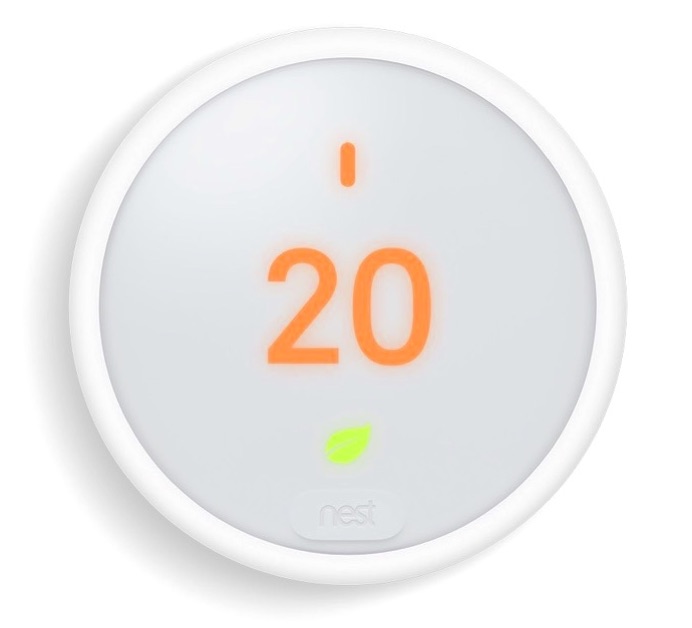
Imagine you’re going out for a while in the evening and don’t want to spend 5-10 minutes running all through your house turning off lights, unplugging things, and turning down thermostats. With Works with Nest, all you’d have to do is set your Nest smart thermostat to its away mode (which can be done via the app), and all of your compatible and connected devices will also switch to their respective away modes. Your lights will go off (or on, if they’re meant for security), smart cameras will activate, alarm systems will arm themselves, and thermostats will reduce the temperatures in your home.
Honeywell smart thermostats
Honeywell designs several types of smart thermostat. You’ll find Honeywell thermostats with colour screens, some are simple programmable smart thermostats, and others have the same round, sleek style as other popular smart thermostats.
Honeywell smart thermostats connect to your Wi-Fi to let you control the thermostat via the Honeywell app. Some models of Honeywell smart thermostat will let you know if a weather system is moving in so you can adjust your heat or will adapt to your heating preferences so you’re never too hot or cold.
Depending on the Honeywell smart thermostat you choose, it will work with forced air, heat pump, radiant, and central HVAC systems, but they will not work with electric baseboard heaters or connected fireplaces.
Electric baseboard and radiant heat smart thermostats
There are a few smart thermostats on the market that work with electric baseboard heaters and radiant in-floor heating systems. One of the biggest differences between a forced air thermostat like Google Nest and a electric baseboard heater thermostat or a radiant heat thermostat is that forced air requires one thermostat for the entire home. With electric baseboard heaters and radiant heat, you’ll need multiple thermostats. Each baseboard heater or zone requires a single thermostat to work.
Mysa electric baseboard heat and radiant heat smart thermostat
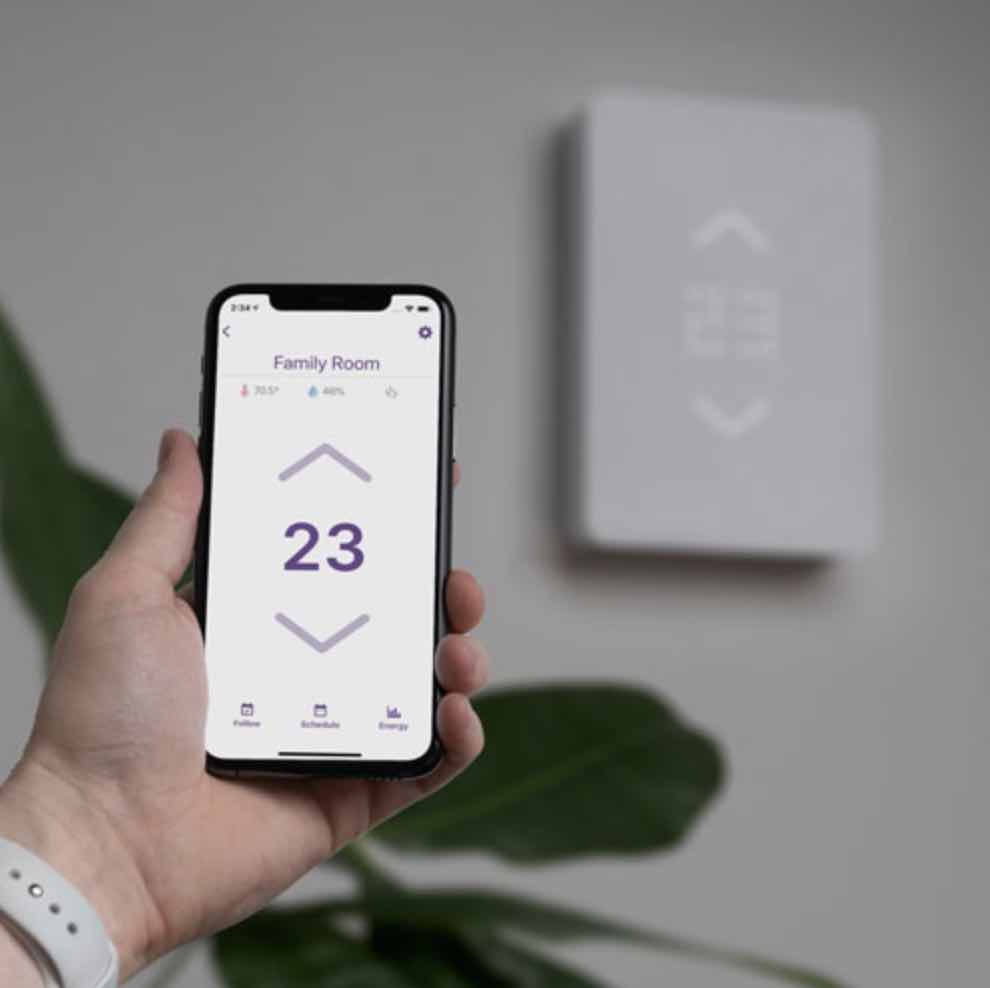
There are a few smart thermostats on the market that work with electric baseboard heaters and radiant heat systems. Mysa is one of the most popular options in this category.
Mysa is a smart thermostat with a few options. You can use a Mysa to control an individual electric baseboard heater and there is a Mysa for radiant in-floor heating.
Because you need to install multiple thermostats to control each electric baseboard, you can have complete home control with Mysa. It lets you link your thermostats together to control your heat in every zone, all from the Mysa app.
If you’d like all of your heaters to turn on and off at the same time, you can set that in your Mysa app. Mysa will let you turn your heater off and on, set it on a schedule, or set your home to Away mode so your heat doesn’t turn on as often. Mysa also logs your energy use so you’ll have an idea of how much you spend and where you can save on energy costs.
Mysa only works with electric baseboard heating or radiant in-floor heating. It will not work with radiant floor water-based systems. If you have a furnace, heat pump, radiant, and central HVAC systems, Mysa will not be compatible with your system either.
Take the next step
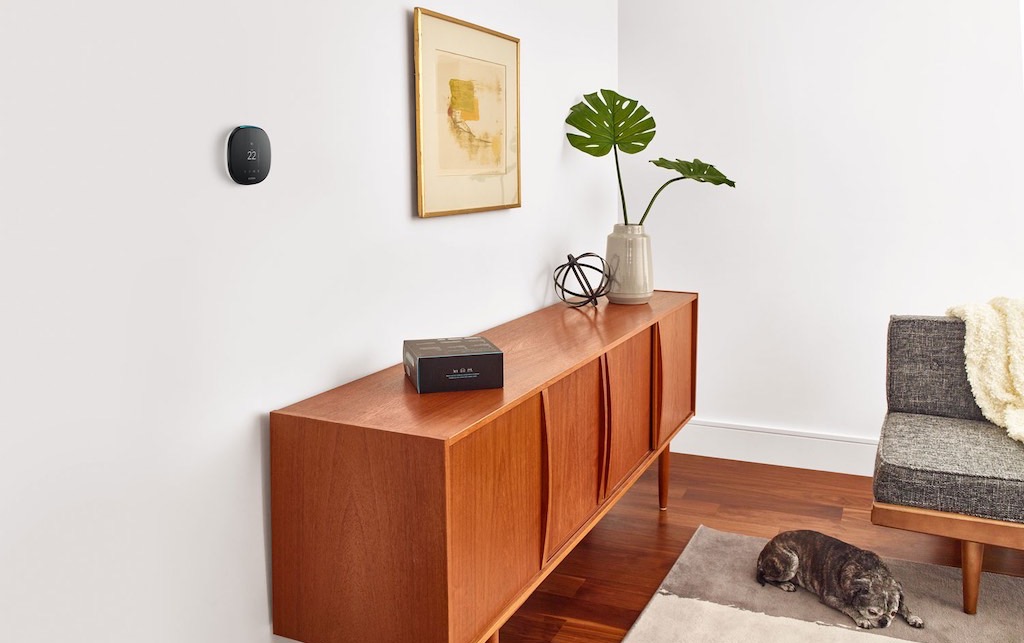
Now that you know what smart thermostats are and how they work, take the next step and check out all of the smart thermostats at Best Buy to see which smart thermostat will work for you and your home.







While these 3 brands, Nest Honeywell and Ecobee, work great for most all HVAC type systems, they cannot be integrated to electric baseboard heaters. For such applications where an Electric baseboard heater is used, with a separate on-wall thermostat, the Sinope thermostat (https://www.bestbuy.ca/en-ca/product/sinope-sinope-smart-thermostat-starter-kit-gt125-k2-white-gt125-k2/10383885.aspx? ) is the only one that will integrate with Electric baseboard heaters. A nice note is that it’s a Canadian company from Quebec.
Comments are closed.